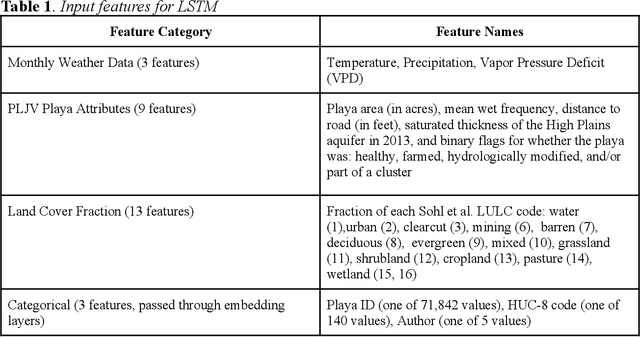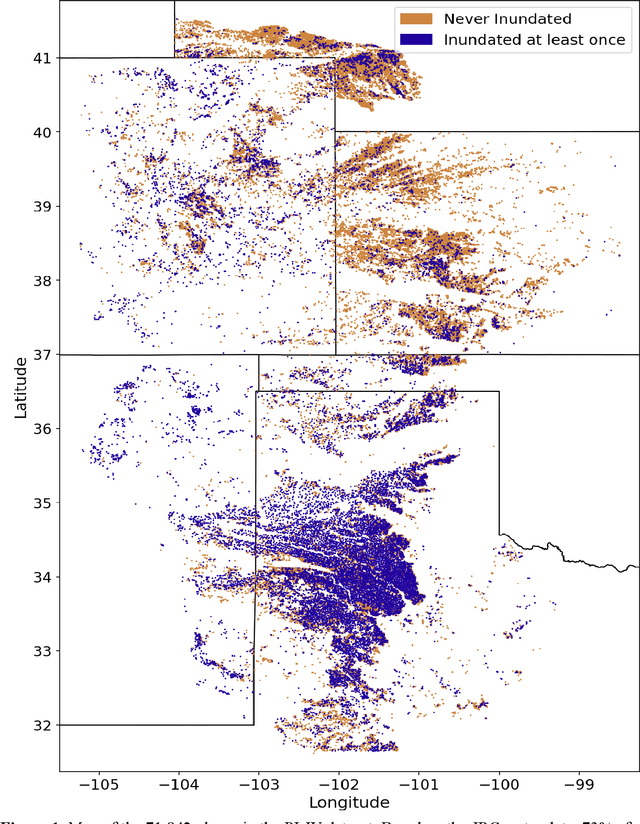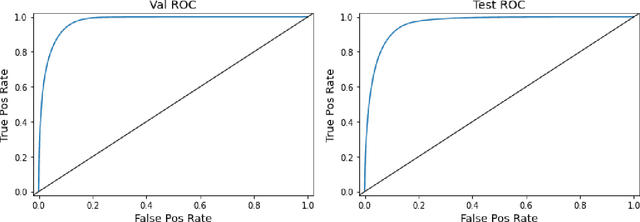Meghan Bogaerts
Predicting Playa Inundation Using a Long Short-Term Memory Neural Network
Oct 16, 2020



Abstract:In the Great Plains, playas are critical wetland habitats for migratory birds and a source of recharge for the agriculturally-important High Plains aquifer. The temporary wetlands exhibit complex hydrology, filling rapidly via local rain storms and then drying through evaporation and groundwater infiltration. Using a long short-term memory (LSTM) neural network to account for these complex processes, we modeled playa inundation for 71,842 playas in the Great Plains from 1984-2018. At the level of individual playas, the model achieved an F1-score of 0.538 on a withheld test set, displaying the ability to predict complex inundation patterns. When averaging over all the playas in the entire region, the model is able to very closely track inundation trends, even during periods of drought. Our results demonstrate potential for using LSTMs to model complex hydrological dynamics. Our modeling approach could be used to model playa inundation into the future under different climate scenarios to better understand how wetland habitats and groundwater will be impacted by changing climate.
 Add to Chrome
Add to Chrome Add to Firefox
Add to Firefox Add to Edge
Add to Edge